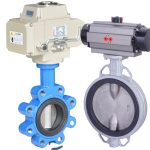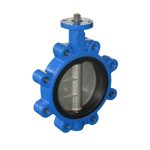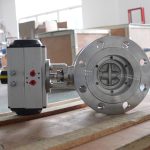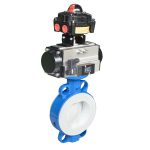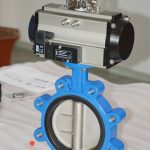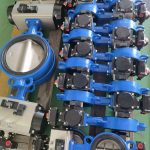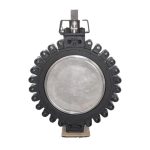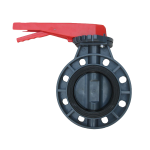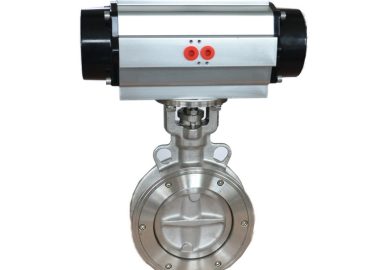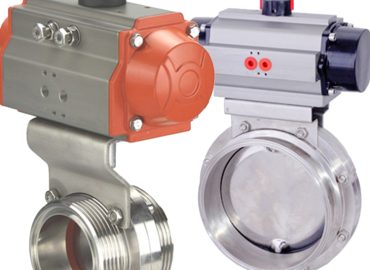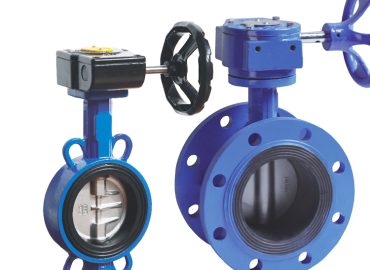Choosing the right pneumatic butterfly valve manufacturer can significantly influence the efficiency and reliability of your industrial processes. Whether in the water treatment, chemical, or power generation industries, these valves play a critical role in regulating flow and preventing leaks. However, the marketplace is saturated with manufacturers promising the best quality and service. This comprehensive guide aims to navigate through this complex landscape, providing you with key insights and factors to consider when selecting the best pneumatic butterfly valves manufacturer. We will delve into the nuances of these valves, discuss essential selection criteria, and introduce some of the top manufacturers in the industry.
Introduction
Choosing the best pneumatic butterfly valve manufacturer is a crucial decision that requires careful consideration and research. A high-quality butterfly valve, an integral component in many industrial systems, is vital for controlling the flow of fluids or gases within pipelines effectively. The right manufacturer will provide not just top-notch products, but also stellar customer service, technical support, and comprehensive warranties. When evaluating manufacturers, it’s important to consider several factors. Firstly, assess the quality and durability of their products. High-grade materials, precision engineering, and rigorous testing procedures are indicative of superior quality. Look for manufacturers who have international standards certifications such as ISO or CE, which serve as validations of their commitment to quality. Secondly, consider their industry experience and reputation. Manufacturers with years of experience usually have extensive knowledge of different industry needs and are likely to offer more reliable and innovative solutions. Check for client testimonials and reviews to gauge their reputation. Thirdly, evaluate their service capacity. Do they offer custom solutions tailored to your specific needs? What about after-sales services? A manufacturer that provides timely maintenance, repair services, and technical support would be an ideal choice. Finally, compare pricing. While it’s not advisable to compromise quality for cost, it’s still important to ensure you’re getting value for money. Some top manufacturers in the industry include Emerson Electric Co., Flowserve Corporation, and IMI plc, all of whom have been lauded for their quality products and excellent service. In conclusion, choosing the right manufacturer involves carefully weighing these factors to ensure you select a partner that delivers high-quality pneumatic butterfly valve and stands behind their products with robust support and service.
Brief explanation of the importance of pneumatic butterfly valve in various industries.
Pneumatic butterfly valve play a crucial role in a wide array of industries, providing essential control over the flow of liquids, gases, and semi-solids through pipelines. In the water treatment industry, these valves are integral in regulating the flow of water, ensuring efficient processing and distribution. In the power generation sector, they are used to control steam flow, contributing to safe and effective power production. The oil and gas industry relies heavily on these valves for safe transportation of petroleum products, while the chemical industry uses them to control the flow of various chemical substances during processing. Pneumatic butterfly valve are favored for their durability, ease of operation, and ability to handle high pressure and temperature conditions. Their importance lies in their ability to ensure smooth, efficient, and safe operations across these various industries.
The need for choosing the right manufacturer for these valves.
Choosing the right manufacturer for pneumatic butterfly valve is paramount due to the critical role these components play in various industrial applications. A reliable manufacturer ensures the quality, durability, and efficiency of these valves, which are essential for maintaining safe and seamless operations. A poorly made valve can lead to operational inefficiencies, increased downtime due to frequent maintenance or replacements, and in worst-case scenarios, catastrophic failures resulting in safety risks and significant financial losses. Additionally, the right manufacturer will provide excellent customer service, including technical support and after-sales services, ensuring any issues you encounter are promptly and effectively addressed. They may also offer custom solutions tailored to your specific needs, further enhancing the effectiveness of your operations. Therefore, investing time and effort into choosing the right pneumatic butterfly valve manufacturer is a strategic decision that can significantly impact your business’s operational efficiency and bottom line.
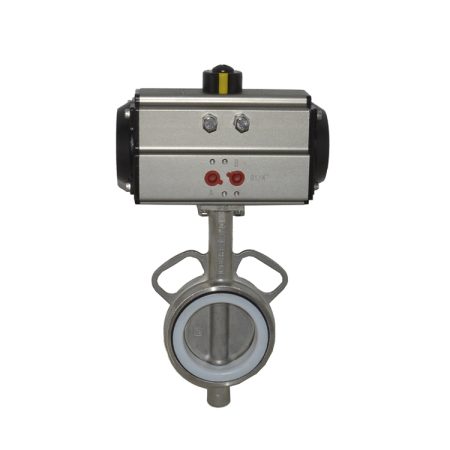
Understanding Pneumatic Butterfly Valve
Pneumatic butterfly valve are a type of flow control device used in various industrial applications to regulate or isolate the flow of different mediums such as liquid, gas, and steam. They consist of a disc mounted on a rotating shaft, which, when turned, either allows the medium to pass through (when the disc is aligned with the flow) or blocks it (when the disc is perpendicular to the flow). The term “pneumatic” refers to the method of actuation – these valves are operated using compressed air, which provides the force required to turn the disc. This pneumatic actuation offers several benefits, including fast and efficient operation, compatibility with automated systems, and suitability for use in hazardous environments where electrically powered devices could pose a risk. The design of butterfly valve makes them a compact, lightweight, and cost-effective solution for flow control. They’re also known for their durability and ability to handle high-pressure conditions, making them suitable for heavy-duty industrial applications. Despite their simplicity, understanding how pneumatic butterfly valve work and their potential applications requires a degree of technical knowledge. Therefore, it’s essential to work with experienced manufacturers or suppliers who can provide the necessary guidance and support.
Detailed explanation about what a pneumatic butterfly valve is.
A pneumatic butterfly valve is a type of flow control device used extensively in various industries for regulating or isolating the flow of different mediums such as gases, liquids, and semi-solids. The valve comprises a disc mounted on a rotating shaft within a pipe. When the disc is turned parallel to the flow, it allows the medium to pass through, and when it’s turned perpendicular to the flow, it blocks the medium. The term ‘pneumatic’ signifies that the actuation – or the operation of the valve – is powered by compressed air. This air force moves the actuator, which in turn rotates the disc inside the valve. Pneumatic actuation enables rapid and efficient operation, making these valves ideal for automated systems and environments where electrical devices may pose a risk. Butterfly valve are known for their compact and lightweight design, making them an economical choice for many applications. They also offer durability and can handle high-pressure and temperature conditions, making them suitable for heavy-duty industrial use.
Different types of pneumatic butterfly valve and their applications.
Pneumatic butterfly valve come in various types, each designed for specific applications. The most common types include resilient seated, high performance valve, and triple offset marine butterfly valve. Resilient seated butterfly valve are often used for lower pressure and temperature applications in industries like water treatment and irrigation, where they handle liquids, gases, and semi-solids. They feature a flexible seat which tightly seals against the disc, providing a good shutoff capability. High performance butterfly valve, on the other hand, are designed for higher pressure and temperature applications. They’re frequently used in the oil, gas, and chemical industries, where they handle corrosive and abrasive fluids. These valves have a double offset design, which reduces friction and wear on the valve, increasing its lifespan. Lastly, triple offset butterfly valve are used for the most demanding applications involving high pressures and temperatures, such as in power plants and petrochemical facilities. They feature a metal-to-metal seal which can withstand these harsh conditions, and a triple offset design which virtually eliminates friction, reducing wear and improving durability. Each of these valves uses pneumatic actuation for efficient and reliable operation. Understanding the different types of pneumatic butterfly valve and their applications can help in selecting the right valve for your specific needs.
Factors to Consider When Choosing a Manufacturer
Choosing the right manufacturer is a critical business decision that can significantly impact your product’s quality, your production timeline, and ultimately, your bottom line. Several factors should be considered when making this decision. First, you need to evaluate the manufacturer’s capabilities – do they have the necessary equipment, technology, and expertise to produce your product to your specifications? You also need to consider their capacity – can they handle your volume requirements, and can they scale up if your business grows? Another important factor is the manufacturer’s quality control processes. It’s crucial to choose a manufacturer that adheres to strict quality standards to ensure your product’s consistency and reliability. Additionally, consider the manufacturer’s location. While overseas manufacturers may offer lower costs, language barriers, shipping delays, and potential quality issues can pose challenges. On the other hand, local manufacturers might charge more but can provide faster turnaround times and easier communication. Also, consider the manufacturer’s reputation in the industry. Look for reviews or testimonials from previous clients to gauge their reliability and customer service. Lastly, don’t overlook the importance of cost. While it shouldn’t be the sole deciding factor, you must find a manufacturer that fits within your budget without compromising on quality or service. By carefully considering these factors, you can select a manufacturer that aligns with your business goals and contributes to your success.
Quality of the valves: Discuss the importance of quality and how it affects the performance and lifespan of the valve.
The quality of valves, particularly pneumatic butterfly valve, plays a crucial role in their performance and lifespan. High-quality valves are typically made from robust materials that can withstand varying pressures and temperatures, resist corrosion, and prevent leaks. They also tend to have precise construction and design, ensuring a tight seal when closed and unrestricted flow when open. The importance of valve quality becomes apparent when considering the potential consequences of valve failure, such as system downtime, loss of product, safety risks, and costly repairs or replacements. A high-quality valve will perform reliably, maintaining effective flow control and isolation over an extended period, thereby reducing the frequency of maintenance and replacement. Furthermore, quality valves often feature superior designs that minimize wear and tear on the components, contributing to a longer operational lifespan. Therefore, while high-quality valves may come with a higher upfront cost, they can provide significant savings in the long run due to their superior performance and durability. It’s essential to choose a reputable manufacturer who adheres to strict quality control standards to ensure you’re getting a valve that meets your performance expectations and provides good value for money.

Certifications and standards: Explain the relevance of certifications like ISO, CE, etc., and why manufacturers should adhere to these standards.
Certifications and standards such as ISO (International Organization for Standardization), CE (Conformité Européene), or others are critical in the manufacturing industry, including valve production. These certifications indicate that a manufacturer adheres to internationally recognized quality, safety, and efficiency standards. For instance, an ISO certification demonstrates that the manufacturer has a robust quality management system in place, ensuring consistent product quality. Similarly, the CE mark indicates that the product meets the European Union’s health, safety, and environmental protection standards. Manufacturers who adhere to these standards provide a level of assurance to their customers about the reliability and safety of their products. Additionally, having these certifications can also open up more market opportunities, as many businesses and governments require their suppliers to be certified. It also demonstrates a manufacturer’s commitment to continuous improvement, as maintaining these certifications typically involves regular audits and inspections. Therefore, when choosing a manufacturer, it’s essential to consider their certifications as a reflection of their dedication to quality, safety, and customer satisfaction.
After-sales service: Discuss the importance of good customer service and technical support after the purchase.
After-sales service, which includes customer service and technical support, is a crucial aspect of the overall customer experience and can significantly impact customer satisfaction and loyalty. Once a purchase has been made, customers often require assistance with installation, operation, troubleshooting, maintenance, or even returns and replacements. A manufacturer that provides high-quality after-sales service demonstrates a commitment to their customers’ success, ensuring they derive maximum value from their products. Good customer service can help resolve any issues promptly and efficiently, reducing downtime and potential losses for the customer. Moreover, robust technical support can provide valuable guidance and advice, helping customers optimize their product usage and performance. In addition, effective after-sales service can also garner positive reviews and referrals, contributing to a company’s reputation and growth. Therefore, when choosing a manufacturer, it’s essential to consider the quality of their after-sales service as an integral part of their offering.
Pricing: Talk about the balance between cost and quality.
Pricing is a critical factor in any purchasing decision, but it’s essential to understand the balance between cost and quality. While it might be tempting to opt for the most affordable option, lower-priced products may not always offer the best value in the long term. This is especially true in the case of products like valves, where the quality can significantly impact their performance, durability, and the overall efficiency of the system they are part of. High-quality valves, while potentially more expensive upfront, tend to have longer lifespans, better performance, and require less frequent replacement or maintenance, offering better return on investment over time. On the other hand, cheaper, lower-quality valves may end up costing more in the long run due to increased maintenance costs, reduced efficiency, and potential system downtime if they fail. Therefore, when considering the price, it’s important to also consider the total cost of ownership, which includes the initial cost as well as any ongoing maintenance or replacement costs. Choosing a product based on its value, rather than just its price, can lead to better financial outcomes in the long run.

Top Pneumatic Butterfly Valve Manufacturers
Pneumatic butterfly valve manufacturers are pivotal in various industries, including water treatment, oil and gas, and power generation, due to their ability to regulate fluid flow. Some of the top manufacturers in this field include Emerson Electric Co., Flowserve Corporation, and KITZ Corporation.
Emerson Electric Co., a global technology and engineering company, offers a wide range of high-quality pneumatic butterfly valves under its well-known brands, such as Fisher and Bettis. These brands are recognized for their innovation, reliability, and performance. Emerson’s products are designed with the latest technology to meet the diverse needs of their customers across different industries.
Flowserve Corporation is another industry leader known for its comprehensive portfolio of flow control products. The company’s pneumatic butterfly valves are highly regarded for their durability, efficiency, and versatility. Flowserve is committed to delivering superior after-sales service, including maintenance and repair services, ensuring customers get the most out of their investment.
KITZ Corporation, a Japan-based company, is one of the world’s leading manufacturers of valves, including pneumatic butterfly valves. KITZ stands out for its commitment to quality, with all its products undergoing rigorous testing to ensure they meet high standards. The company’s pneumatic butterfly valves are designed for a variety of applications, offering customers a high degree of flexibility and customization.
These manufacturers have established strong reputations in the industry through their commitment to quality, innovation, and customer satisfaction. They continue to invest in research and development to improve their products and meet the evolving needs of their customers. When choosing a pneumatic butterfly valve, it’s important to consider not only the product’s specifications and price but also the manufacturer’s reputation and the quality of their after-sales service.
Provide a list of top manufacturers globally.
When it comes to global manufacturing, several companies stand out due to their scale, innovation, and quality. At the top of the list is General Electric, a multinational conglomerate that operates in sectors such as aviation, healthcare, and energy. Another key player is Siemens AG, a German industrial manufacturing company known for its work in areas like energy, healthcare, and transportation. Toyota Motor Corporation, a Japanese multinational automotive manufacturer, is renowned for its high-quality vehicles and innovative manufacturing processes. South Korea’s Samsung Electronics is a global leader in the electronics sector, known for its consumer electronics and IT & Mobile Communications. Procter & Gamble, an American multinational consumer goods corporation, is one of the largest and most profitable consumer goods companies globally. Finally, Nestlé, a Swiss multinational food and drink processing conglomerate, is the largest food company in the world by revenue. These manufacturers represent the pinnacle of global manufacturing across a diverse range of industries.

Discuss the strengths and specialties of each manufacturer.
Each of the mentioned global manufacturers has its own unique strengths and specialties that have led to their success.
General Electric is known for its broad portfolio, operating in sectors such as aviation, power, renewable energy, and healthcare. Its strength lies in its innovative technologies and solutions that address some of the world’s most complex challenges.
Siemens AG excels in areas such as automation, digitalization, and electrification. The company is recognized for its technological innovations, extensive research and development efforts, and commitment to sustainability.
Toyota Motor Corporation is renowned for its high-quality vehicles and lean manufacturing process, known as the Toyota Production System. This system, characterized by continuous improvement and respect for people, has set the standard for efficiency and quality in the automotive industry.
Samsung Electronics is a leader in the consumer electronics sector, particularly in mobile technology and semiconductors. Its strength lies in its innovative product design, advanced technology, and strong brand presence globally.
Procter & Gamble stands out for its wide range of well-known and trusted brands in the consumer goods market. The company’s strength lies in its deep understanding of consumer needs, strong marketing strategies, and commitment to sustainability.
Nestlé, the largest food company in the world, is known for its diverse product portfolio, including dairy products, beverages, prepared dishes, and pharmaceutical products. Its strength lies in its focus on nutrition, health, and wellness, as well as its strong distribution network worldwide. Each of these manufacturers uses their unique strengths and specialties to maintain their competitive edge and continue to grow in their respective markets.
How to Approach a Manufacturer
Approaching a manufacturer requires careful planning and strategic communication. Start by conducting thorough research on potential manufacturers to understand their capabilities, specialties, reputation, and past collaborations. Look for manufacturers who align with your product requirements, values, and business goals. Once you have identified potential partners, prepare a detailed proposal or product brief. This document should clearly outline your product specifications, expected volumes, target price points, and any special requirements such as quality standards or certifications. It’s also important to articulate your unique selling proposition (USP) and demonstrate market demand for your product.
Next, reach out to the manufacturer through their preferred communication channels. This could be via email, phone, or through a face-to-face meeting. Ensure your communication is professional, clear, and concise. Be ready to answer questions about your product and business. Remember, this is a two-way conversation: while you are evaluating the manufacturer’s capabilities, they are also assessing whether your business is a good fit for them.
If the initial contact goes well, request a sample of their work or arrange a site visit to their manufacturing facility. This will give you a better understanding of their production processes, quality control measures, and working conditions. It can also be a good opportunity to discuss your project in more detail, negotiate terms, and build a relationship with the manufacturer.
Finally, before finalizing any agreement, it’s essential to check references and review their terms and conditions carefully. Consider seeking legal advice to ensure you fully understand your obligations and rights. Remember, choosing a manufacturer is a significant decision that can impact your product quality, delivery times, and overall business success, so take your time to make an informed choice.
Tips on how to communicate effectively with a manufacturer.
Communicating effectively with a manufacturer is crucial to establishing a productive and successful business relationship. Start by being clear and concise in your communications. Clearly articulate your project requirements, timelines, and expectations. Avoid industry jargon unless you’re sure the manufacturer understands it. Use simple, straightforward language whenever possible. Secondly, always be professional and respectful. Remember that it’s not just about what you say but also how you say it. Show appreciation for their time and expertise. Thirdly, keep lines of communication open. Regular updates and check-ins can help prevent misunderstandings and keep the project on track. Use the manufacturer’s preferred communication method, whether it’s email, phone calls, or face-to-face meetings. Fourthly, provide constructive feedback. If you’re not happy with a sample or a part of the process, communicate this directly and promptly, providing clear reasons and suggesting potential solutions. Finally, build a personal relationship. People are more likely to go the extra mile for those they have a good relationship with. So, getting to know your contacts at the manufacturing company on a personal level can lead to better service.
Questions to ask during the initial discussions.
During initial discussions with a potential manufacturer, it’s essential to ask questions that will help you gauge whether they’re the right fit for your project. Start by inquiring about their expertise and experience: What types of products do they typically manufacture? How long have they been in business? Do they have experience with projects similar to yours? Next, probe into their production capabilities and processes: What is their production capacity? Can they meet your required timelines? What quality control measures do they have in place? It’s also crucial to discuss logistics: Where are they located? What are their shipping and delivery processes? You should also ask about pricing: What are their cost structures? Are there any hidden fees? Another essential area to explore is their business practices: Can they provide references from other clients? What are their payment terms? Lastly, don’t forget to ask about their communication practices: Who would be your main point of contact? How often would they provide updates? These questions will give you valuable insight into the manufacturer’s capabilities, reliability, and business practices, helping you make an informed decision.
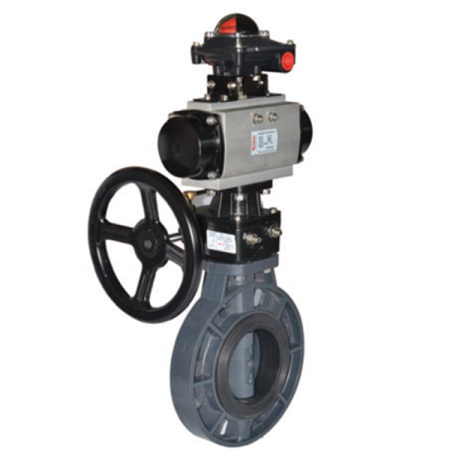
Conclusion
In conclusion, selecting the best pneumatic butterfly valve manufacturer is a multifaceted process that requires careful consideration and thorough research. It’s not just about finding a manufacturer who can deliver a product, but finding a partner who will contribute to the success of your project and business.
Firstly, consider the manufacturer’s experience and expertise in the industry. A manufacturer with a proven track record and extensive knowledge in producing pneumatic butterfly valves is likely to provide high-quality products that meet your specifications. Look for manufacturers who have positive reviews and testimonials from previous clients.
Secondly, assess their production capabilities. Can they meet your volume requirements? Do they have the necessary equipment and technologies to produce the specific type of valve you need? Consider also their quality control measures, as these can significantly impact the performance and longevity of the valves.
Thirdly, don’t overlook the importance of communication. Effective communication is key to ensuring your requirements are understood and met. Look for manufacturers who are responsive, transparent, and willing to provide regular updates throughout the production process.
Finally, consider the value for money. While cost should not be the sole deciding factor, it’s essential to find a manufacturer who can provide high-quality products at a price point that fits your budget. Remember, the cheapest option is not always the best when it comes to long-term reliability and performance.
Choosing the right manufacturer is a significant decision that can greatly affect the success of your project. By taking the time to carefully evaluate potential partners, you can find a pneumatic butterfly valve manufacturer who not only meets your needs but also adds value to your business.
Recap the main points discussed in the article.
In this article, we delved into the process of choosing the best pneumatic butterfly valve manufacturer. We highlighted the importance of considering the manufacturer’s experience and expertise in the industry, their production capabilities, quality control measures, communication practices, and the overall value for money they offer. We stressed that choosing the right manufacturer is a crucial decision that can significantly impact the success of your project. Therefore, it’s essential to take the time to thoroughly evaluate potential partners, ensuring you select a manufacturer who not only meets your needs but brings added value to your business.
Encourage readers to do thorough research before deciding on a manufacturer.
Given the importance of choosing the right manufacturer for your project success, it’s vital to conduct thorough research before making a decision. Market research serves as a compass for this process, steering each choice you make towards your ultimate goal of successfully launching your product or service. It provides critical information about your market and your business landscape, helping you assess your category, strategize, and make informed decisions. Researching potential manufacturers can also help you gain insights into industry trends, understand their production capabilities, quality control measures, and communication practices. This not only ensures optimal decisions but also improves profitability. Therefore, I strongly encourage all readers to invest time and effort in conducting comprehensive research before selecting a manufacturer, as it can significantly impact the success of your project and longevity of your business.



